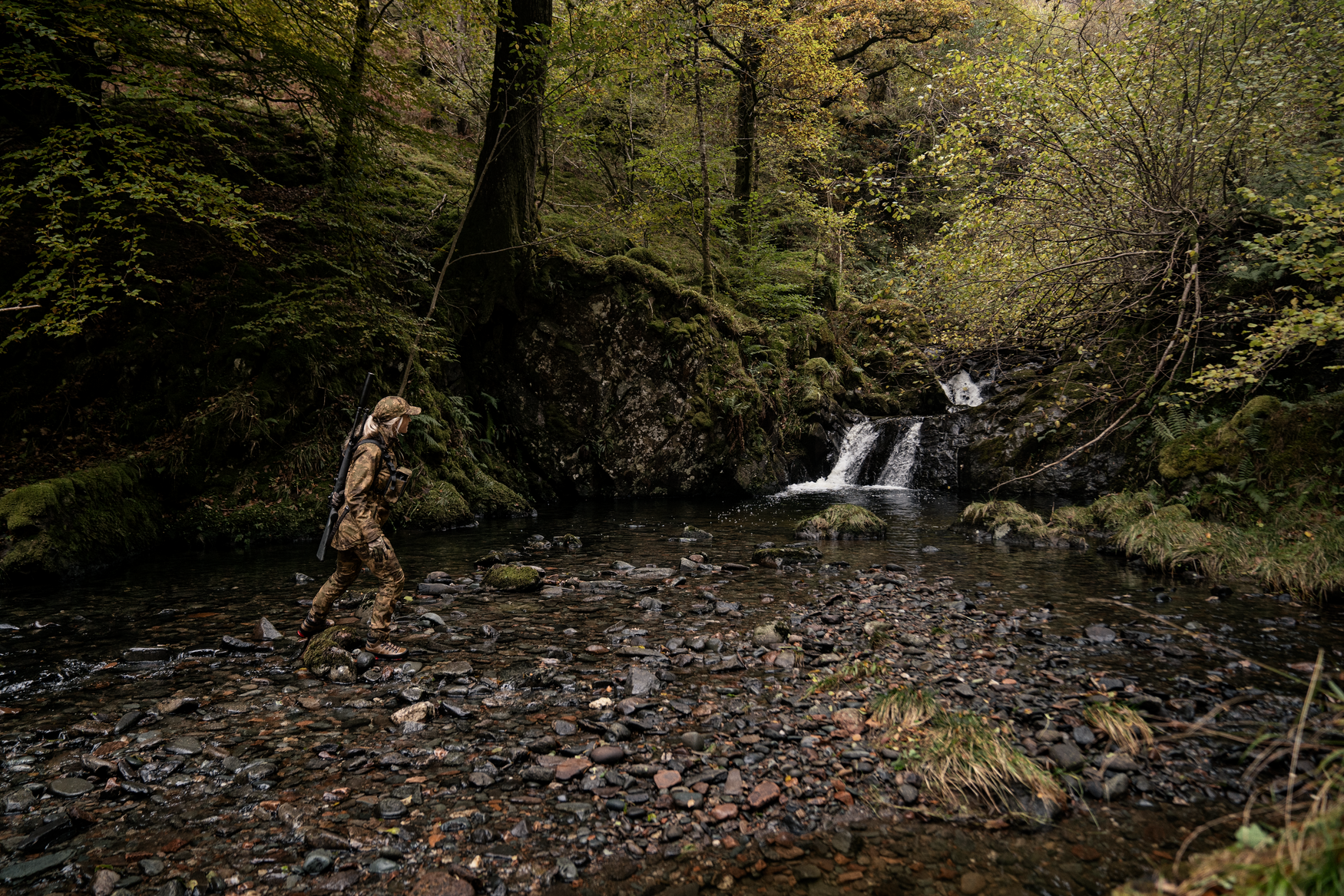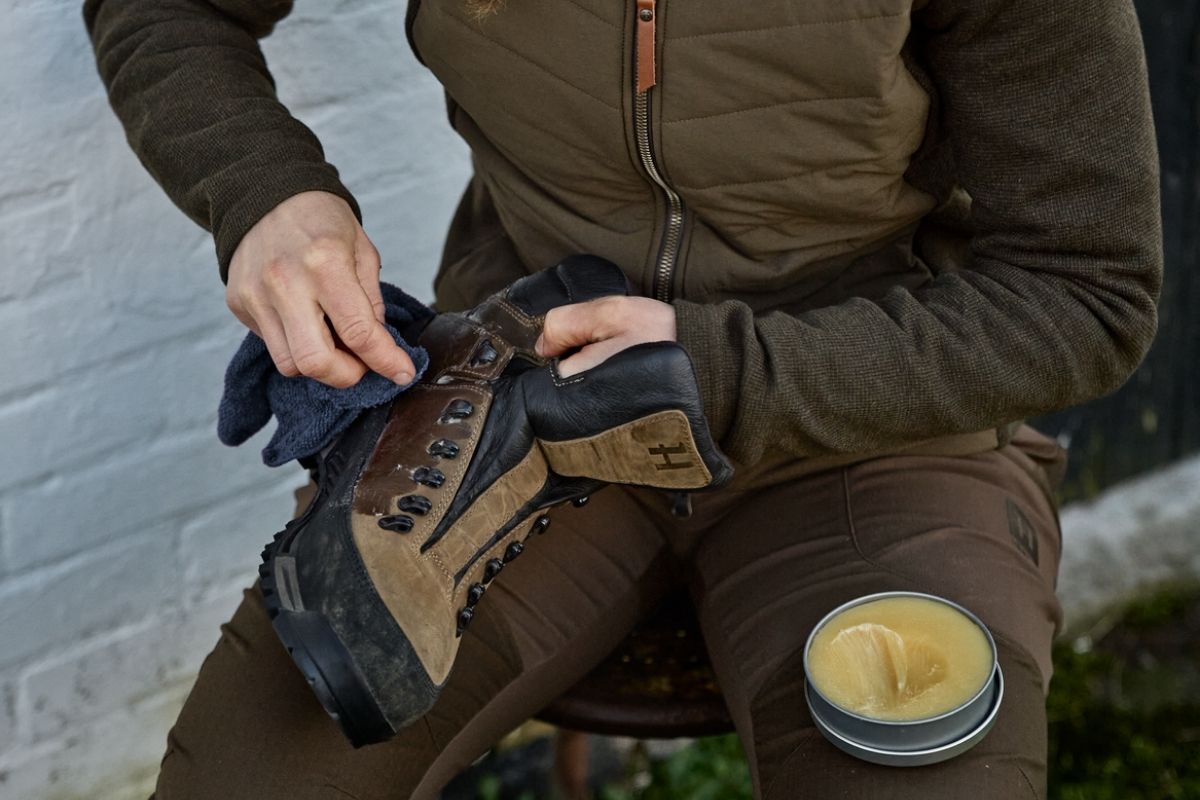Artikel: Tarntechniken für Jägerinnen: So optimierst du deine Tarnung im Revier

Tarntechniken für Jägerinnen: So optimierst du deine Tarnung im Revier
Effektive Tarnung bedeutet weit mehr, als nur mit der Umgebung zu verschmelzen. Es geht darum, jede Form der Wahrnehmung zu minimieren - von der Sichtbarkeit bis hin zum Geruch. Gerade bei der Jagd auf besonders wachsame Wildarten ist die Fähigkeit, unentdeckt zu bleiben, entscheidend. Ob auf dem Hochsitz, beim Pirschen oder beim Ansitz am Boden, eine verfeinerte Tarnstrategie kann deine Jagderfolge deutlich steigern.
Im Folgenden erfährst du die wichtigsten Techniken, um deine Camouflage und Tarnung in verschiedenen Jagdsituationen zu optimieren.

1. Das richtige Tarnmuster wählen
Alles beginnt mit dem passenden Camouflage-Muster. Die Wahl sollte sich nach dem Gelände richten: Wald, Feld, Gebirge oder offenes Moorland, denn jedes Terrain erfordert andere Farben und Strukturen.
Doch Kleidung allein reicht nicht. Die Natur ist niemals gleichmäßig. Ergänze dein Tarnmuster mit Zweigen, Gräsern oder Blättern aus der Umgebung. So brichst du deine Silhouette auf und erzeugst Tiefe, besonders wichtig, da Wild wie Rot- oder Rehwild zwar nur eingeschränkte Tiefenwahrnehmung hat, aber Kontraste und Bewegungen sehr gut erkennt.
Merke: Es gibt kein universelles Tarnmuster. Beobachte dein Umfeld und passe deine Tarnung flexibel an - auch durch Layering oder kleine Veränderungen direkt im Revier.
2. Bewegung minimieren
Wildarten wie Rehe oder Hasen besitzen ein enormes Sichtfeld von bis zu 300 Grad - der Mensch dagegen nur rund 120 Grad. Schon kleinste Bewegungen werden so auch auf große Distanz wahrgenommen.
Deshalb ist es wichtig sich langsam zu bewegen, bewusst und im Rhythmus des Wildes. Verändere deine Position nur, wenn das Tier äst oder den Kopf abwendet, und verharr unbeweglich, sobald es aufmerksam wird. Gerade bei der Pirsch ist dieses Wechselspiel aus langsamer Annäherung und absoluter Ruhe der Schlüssel zum Erfolg.

3. Die Umgebung als Tarnung nutzen
Selbst die beste Tarnkleidung wirkt nur optimal in Kombination mit der richtigen Position. Vier Faktoren sind entscheidend: Vegetation, Licht, Hintergrund und Umweltbewegung.
-
Vegetation: Stelle dich in oder direkt neben Deckung. Achte darauf, dass dein Muster nicht zu stark mit der Umgebung kontrastiert. Dunkle Camouflage im hellgrünen Frühling fällt sofort auf.
-
Licht: Meide direkte Sonneneinstrahlung, die Stoff zum Glänzen bringt. Positioniere dich lieber im Schatten - idealerweise mit der Sonne im Rücken. Das erschwert dem Wild, dich zu erkennen.
-
Hintergrund: Wähle Hintergründe mit Tiefe oder Dunkelheit, um deine Konturen zu verwischen. Vor hellem Himmel oder offener Fläche bist du sofort erkennbar.
-
Bewegung der Umwelt: An windigen Tagen ist die Natur ständig in Bewegung. Ein starrer menschlicher Umriss fällt da besonders auf. Platziere dich hinter bewegtem Bewuchs, um im Rhythmus der Natur zu verschwinden.
4. Die Geruchskontrolle ist ein unterschätzter Teil der Tarnung
Wildtiere verlassen sich stark auf ihren Geruchssinn. Selbst geruchsneutralisierende Sprays oder Waschmittel können menschliche Witterung nur reduzieren, nicht ganz verhindern.
Die wichtigste Regel lautet daher: immer mit dem Wind arbeiten. Prüfe Windrichtung und passe deinen Standort oder Anpirschweg entsprechend an. Vermeide es unbedingt, Wild von vorn im Wind anzupirschen, denn schon kleinste Geruchspartikel verraten deine Anwesenheit, lange bevor du sichtbar bist.
5. Tarnung von Kopf bis Fuß
Komplette Tarnung heißt: keine erkennbaren Körperpartien. Gesicht, Hände und die menschliche Silhouette sind für Wild besonders leicht zu erkennen.

-
Gesicht: Augen, Hautfarbe und Kontraste fallen sofort auf. Nutze eine Sturmhaube, Gesichtsmaske oder Camouflage-Schminke.
-
Hände: Beweglich und auffällig - daher immer mit Handschuhen bedecken, auch mit dünnen.
-
Silhouette: Der aufrechte Körperbau des Menschen, besonders Kopf und Schultern, ist unverkennbar. Verändere die Umrisse mit Kapuze, Schal oder Zweigen. Langes Haar sollte zusammen gebunden und eng am Kopf getragen werden, um Glanz und Bewegung zu vermeiden. Ziel ist es, deine Konturen unregelmäßig und organisch wirken zu lassen , sodass du in der Landschaft verschwindest.
Fazit
Tarnung ist weit mehr als Kleidung. Sie ist ein Zusammenspiel aus Ausrüstung, Beobachtungsgabe und Verständnis für das Verhalten des Wildes. Wer Camouflage beherrscht, liest den Wind, kontrolliert jede Bewegung, nutzt die Umgebung clever und eliminiert verräterische Signale.
Mit der richtigen Vorbereitung wird Tarnung zu deiner zweiten Natur und damit zu einem entscheidenden Faktor für erfolgreiche Jagdtage.

